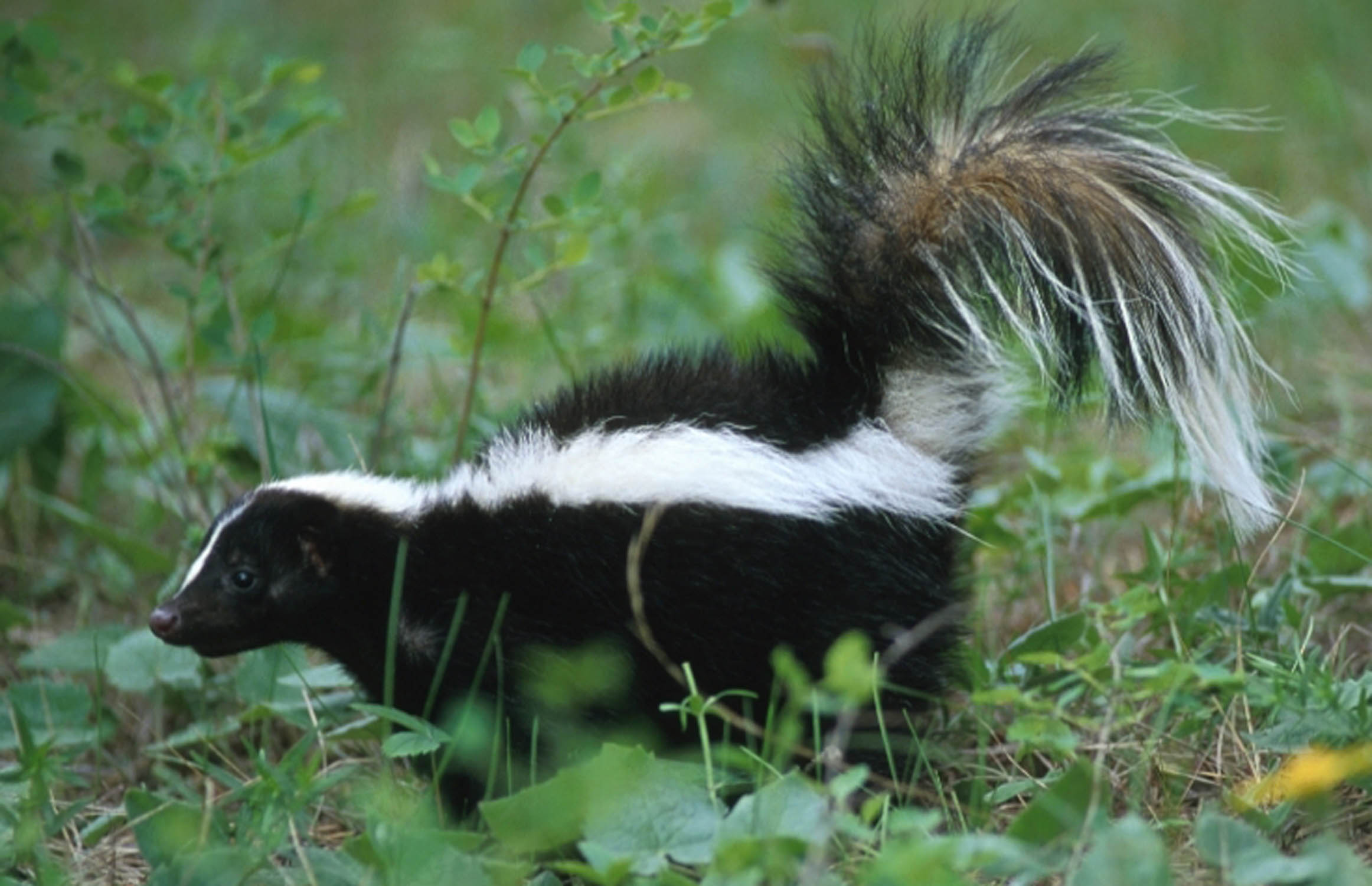Skunk
Skunks are mammals known for their ability to spray a liquid with a strong unpleasant smell. Different species of skunk vary in appearance from black-and-white to brown, cream or ginger colored, but all have warning coloration. Skunk species vary in size from about 15.6 to 37 in long and in weight from about 1.1 lb (spotted skunks) to 18 lb (hog-nosed skunks). They have moderately elongated bodies with relatively short, well-muscled legs and long front claws for digging.
Although the most common fur color is black and white, some skunks are brown or grey and a few are cream-colored. All skunks are striped, even from birth. They may have a single thick stripe across back and tail, two thinner stripes, or a series of white spots and broken stripes (in the case of the spotted skunk). Some also have stripes on their legs.
Skunks are omnivorous, eating both plant and animal material and changing their diets as the seasons change. They eat insects and larvae, earthworms, grubs, rodents, lizards, salamanders, frogs, snakes, birds, moles and eggs. They also commonly eat berries, roots, leaves, grasses, fungi and nuts.
In settled areas, skunks also seek garbage left by humans. Less often, skunks may be found acting as scavengers, eating bird and rodent carcasses left by cats or other animals. Pet owners, particularly those of cats, may experience a skunk finding its way into a garage or basement where pet food is kept. Skunks commonly dig holes in lawns in search of grubs and worms.
Skunks are one of the primary predators of the honeybee, relying on their thick fur to protect them from stings. The skunk scratches at the front of the beehive and eats the guard bees that come out to investigate. Mother skunks are known to teach this behavior to their young.
Skunks are notorious for their anal scent glands, which they can use as a defensive weapon. They are similar to, though much more developed than, the glands found in species of the family Mustelidae. Skunks have two glands; one on each side of the anus. These glands produce the skunk's spray, which is a mixture of sulfur-containing chemicals such as thiols (traditionally called mercaptans), which have an offensive and nauseating odour. A skunk's spray is powerful enough to ward off bears and other potential attackers. Muscles located next to the scent glands allow them to spray with a high degree of accuracy, as far as 10 ft. The smell aside, the spray can cause irritation and even temporary blindness, and is sufficiently powerful to be detected by a human nose up to 3.5 miles down wind.

By Rikki's Refuge. CC BY 2.0, via Flickr

